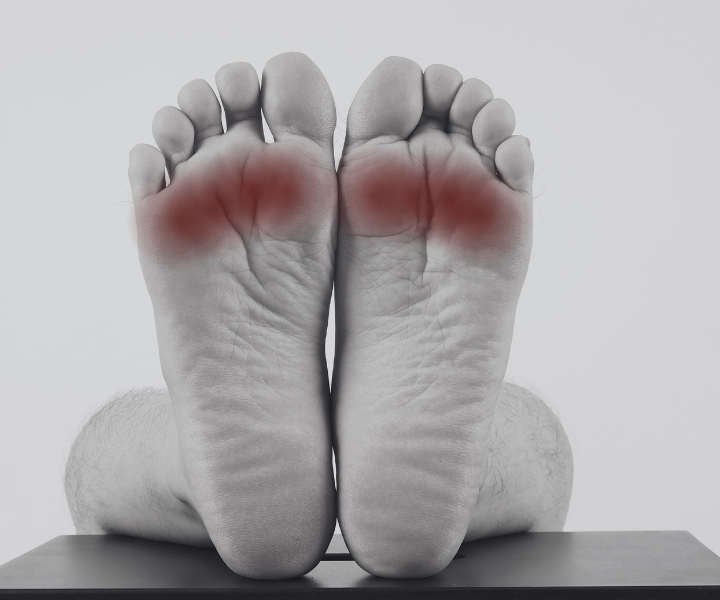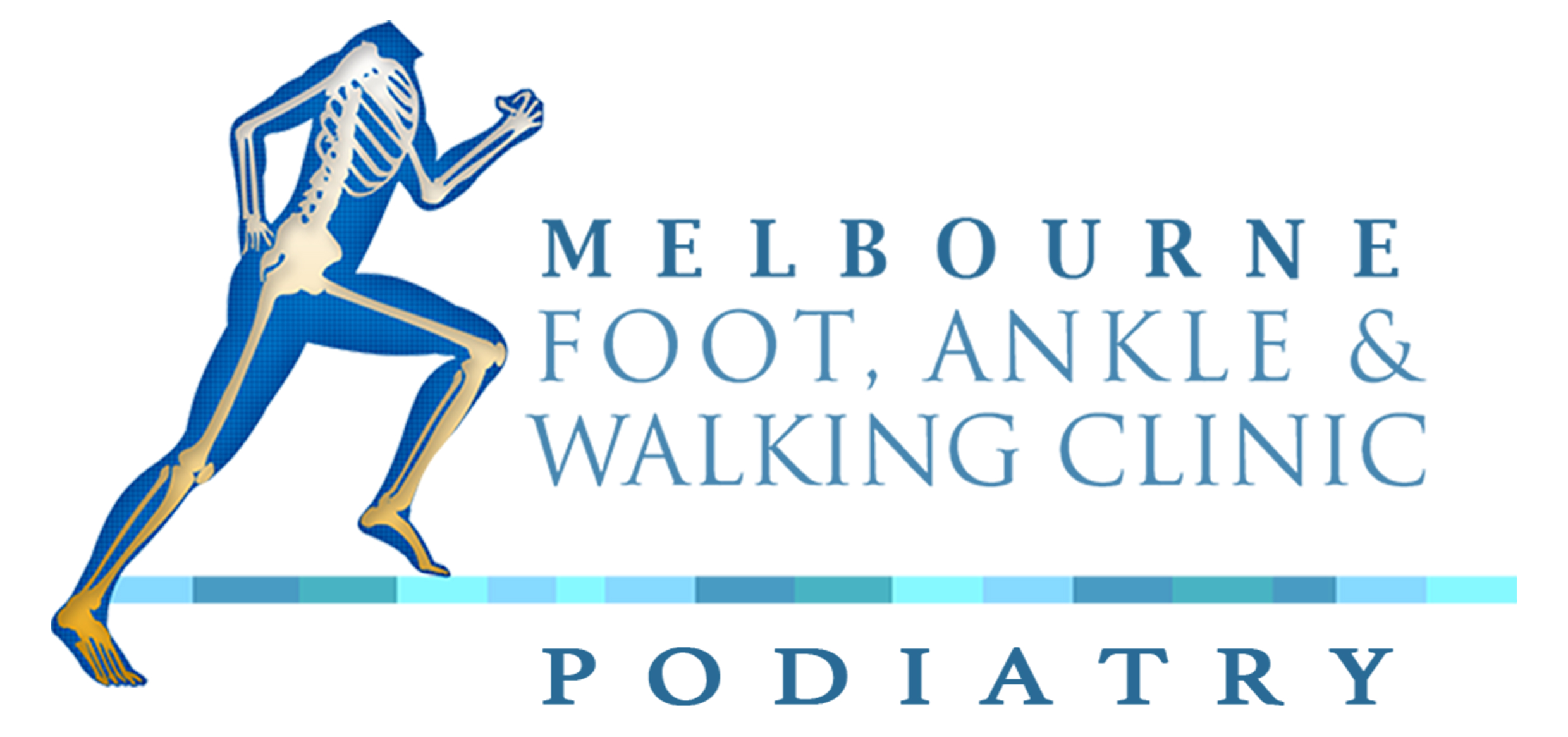What is Metatarsalgia
Metatarsalgia is a common foot condition that affects the metatarsal region, causing pain and discomfort in the ball of the foot. Metatarsalgia refers to pain and inflammation that occurs in the metatarsal bones, the long bones that connect the toes to the midfoot. The metatarsals play a crucial role in weight-bearing and propulsion during walking and running. When excessive pressure is placed on the metatarsal heads, it can lead to irritation, inflammation, and pain in the ball of the foot.

Symptoms of Metatarsalgia
Symptoms of Metatarsalgia can vary from patient to patient, however the most common symptoms of metatarsalgia include:
- Pain and tenderness in the ball of the foot, typically worsening during weight-bearing activities.
- A burning or shooting pain in the toes.
- Numbness or tingling sensation in the toes. Pain that intensifies while walking barefoot or wearing thin-soled shoes.
- Pain that improves with rest.
Causes of Metatarsalgia
Several factors can contribute to the development of metatarsalgia, including:
- High-impact activities: Participating in high-impact sports, such as running or jumping, can increase the pressure on the metatarsal region.
- Improper footwear: Wearing shoes that lack proper cushioning or have narrow toe boxes can lead to excessive pressure on the metatarsal heads.
- Foot deformities: Structural abnormalities like high arches, bunions, or hammertoes can increase the risk of metatarsalgia.
- Excessive weight: Carrying excess body weight increases the load on the feet, leading to increased pressure on the metatarsal bones.
- Ageing: As we age, the fat pads on the soles of our feet may thin out, reducing their ability to absorb shock and protect the metatarsals.
Diagnosis of Metatarsalgia by a Podiatrist
When you visit your podiatrist for suspected metatarsalgia, they will perform a comprehensive biomechanical evaluation in order to determine the cause of your discomfort and ensure you are given a prevention/treatment plan based on your individual case. The biomechanical evaluation will includes:
- Medical history assessment: Your podiatrist will inquire about your symptoms, activities, and footwear habits.
- Physical examination: Your podiatrist will examine your feet, looking for signs of inflammation, tenderness, or any structural abnormalities.
- Gait analysis: Observing your walking pattern can help identify any abnormalities that may contribute to metatarsalgia.
- Imaging tests: In some cases, X-rays or other imaging studies may be ordered to rule out other underlying conditions, such as stress fractures.
Treatment Options for Metatarsalgia
The treatment approach for metatarsalgia aims to alleviate pain, reduce inflammation, and correct any underlying contributing factors. Once your Podiatrist has completed a comprehensive biomechanical evaluation, depending on your specific case, the may recommend the following treatment options:
Rest and activity modification: Taking a break from high-impact activities and modifying your daily activities to reduce pressure on the metatarsals can aid in the healing process.
Footwear modifications: Wearing well-fitting, supportive shoes with cushioned insoles and a wide toe box can help relieve pressure on the metatarsal heads.
Orthotic devices: Custom orthotic inserts may be prescribed to provide additional cushioning and support to the feet, redistributing pressure away from the painful area.
Padding and strapping: The podiatrist may apply metatarsal pads or straps to offload pressure from the affected area and provide pain relief.
Physical therapy: Specific exercises and stretches can help strengthen the foot muscles, improve flexibility, and correct any gait abnormalities.
Medications: Nonsteroidal anti-inflammatory drugs (NSAIDs) may be recommended to reduce pain and inflammation.
Injection therapy: In some cases, corticosteroid injections may be administered to alleviate severe pain and inflammation.
Surgical intervention: Surgery is rarely required for metatarsalgia but may be considered in severe cases with persistent symptoms and structural abnormalities.
Prevention of Metatarsalgia
To prevent or reduce the risk of metatarsalgia, you should consider the following factors:
- Choose appropriate footwear: Opt for well-fitted shoes with adequate cushioning and support.
- Stretch and strengthen: Regularly perform exercises to strengthen foot muscles and stretch calf muscles to improve foot mechanics.
- Gradual increase in activity: Avoid sudden increases in high-impact activities and gradually build up your tolerance.
- Use padding or orthotic inserts: Consider using metatarsal pads or orthotic inserts to provide additional support and cushioning to the metatarsals.
- Maintain a healthy weight: Maintaining a healthy weight reduces the load on your feet, decreasing the risk of metatarsalgia.
When to See a Podiatrist
If you are experiencing severe pain or difficulty walking, notice swelling, redness or an open wound in the affected area, have numbness or tingling that persists or have a history of foot deformities or recurrent foot pain, you should consult a podiatrist at the earliest opportunity
Early diagnosis and appropriate treatment are key to a successful recovery. If you suspect you have metatarsalgia, please book an appointment with one of our podiatrists who can guide you towards a pain-free and active lifestyle. Book an appointment with our friendly team of Podiatrists for Metatarsalgia Treatment in Melbourne, by calling 03 9878 4566 or emailing [email protected] and we can book you in for a comprehensive assessment in the closest clinic location that suits you; Blackburn, Melbourne CBD, Newport, Caroline Springs or Springvale.
